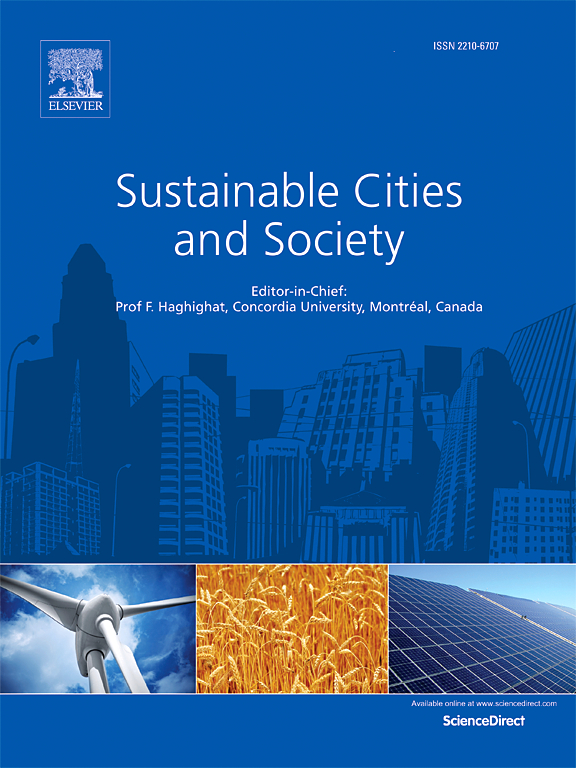Unveiling the nonlinear relationships and co-mitigation effects of green and blue space landscapes on PM2.5 exposure through explainable machine learning
IF 10.5
1区 工程技术
Q1 CONSTRUCTION & BUILDING TECHNOLOGY
引用次数: 0
Abstract
Green-blue spaces are nature-based solutions to mitigate particulate matter pollution. However, the individual and co-mitigation effects of green-blue space landscapes on PM2.5 exposure risk remain poorly understood. This study employed an explainable machine learning framework to investigate the nonlinear relationships, interaction effects, and heterogeneity of green-blue space landscape patterns on population-weighted PM2.5 exposure (PWP) in the Yangtze River Delta, China. Our findings highlight that (1) Greenspace coverage (G_PLAND), mean greenspace patch size (G_AREA_MN), blue space patch contiguity (W_CONTIG_MN), and mean distance between blue space patches (W_ENN_MN) are the four most influential landscape indicators. (2) G_PLAND and G_AREA_MN negatively influence PWP with thresholds of 40 % and 50 ha, respectively. W_CONTIG_MN (> 0.26) and W_ENN_MN (< 400 m) positively impact PWP. (3) Effects of green-blue space landscapes on PWP vary with different exposure levels: high (blue space is more important), medium (green and blue space are equally important), and low (green-blue spaces are not important). (4) Interactions of green and blue spaces can reinforce PWP mitigation under certain conditions (G_PLAND > 40 %, G_AREA_MN < 12 ha, W_ENN_MN and W_CONTIG_MN with thresholds of 200 m and 0.31, respectively). The findings can facilitate comprehensive planning and optimization of regional green-blue spaces to mitigate PWP.
求助全文
约1分钟内获得全文
求助全文
来源期刊

Sustainable Cities and Society
Social Sciences-Geography, Planning and Development
CiteScore
22.00
自引率
13.70%
发文量
810
审稿时长
27 days
期刊介绍:
Sustainable Cities and Society (SCS) is an international journal that focuses on fundamental and applied research to promote environmentally sustainable and socially resilient cities. The journal welcomes cross-cutting, multi-disciplinary research in various areas, including:
1. Smart cities and resilient environments;
2. Alternative/clean energy sources, energy distribution, distributed energy generation, and energy demand reduction/management;
3. Monitoring and improving air quality in built environment and cities (e.g., healthy built environment and air quality management);
4. Energy efficient, low/zero carbon, and green buildings/communities;
5. Climate change mitigation and adaptation in urban environments;
6. Green infrastructure and BMPs;
7. Environmental Footprint accounting and management;
8. Urban agriculture and forestry;
9. ICT, smart grid and intelligent infrastructure;
10. Urban design/planning, regulations, legislation, certification, economics, and policy;
11. Social aspects, impacts and resiliency of cities;
12. Behavior monitoring, analysis and change within urban communities;
13. Health monitoring and improvement;
14. Nexus issues related to sustainable cities and societies;
15. Smart city governance;
16. Decision Support Systems for trade-off and uncertainty analysis for improved management of cities and society;
17. Big data, machine learning, and artificial intelligence applications and case studies;
18. Critical infrastructure protection, including security, privacy, forensics, and reliability issues of cyber-physical systems.
19. Water footprint reduction and urban water distribution, harvesting, treatment, reuse and management;
20. Waste reduction and recycling;
21. Wastewater collection, treatment and recycling;
22. Smart, clean and healthy transportation systems and infrastructure;
 求助内容:
求助内容: 应助结果提醒方式:
应助结果提醒方式:


